In honor of the eleventh edition of the Rome Film Festival, Musement takes a look at five films shot in the beautiful Eternal City.
The eleventh edition of the Rome Film Festival starts today. The Eternal City celebrates cinema with a selection of movies directed by master filmmakers such as Werner Herzog as well as panels and presentations with silver screen icons like Meryl Streep and Viggo Mortensen.
And we would be remiss if we didn’t point out that beautiful Rome has been immortalized in many films, often portrayed as a character in and of itself. From Rossellini and De Sica’s neo-realism works to the 1951 Hollywood blockbuster Quo Vadis? set in Ancient Rome and shot in Cinecittà to contemporary films from Woody Allen and Paolo Sorrentino, the art of cinema has let us vicariously stroll Rome’s enchanting streets, admire its breathtaking monuments and absorb its singular energy.
In honor of the Rome Film Festival, here are five films set in Rome that have made the Eternal City even more eternal.
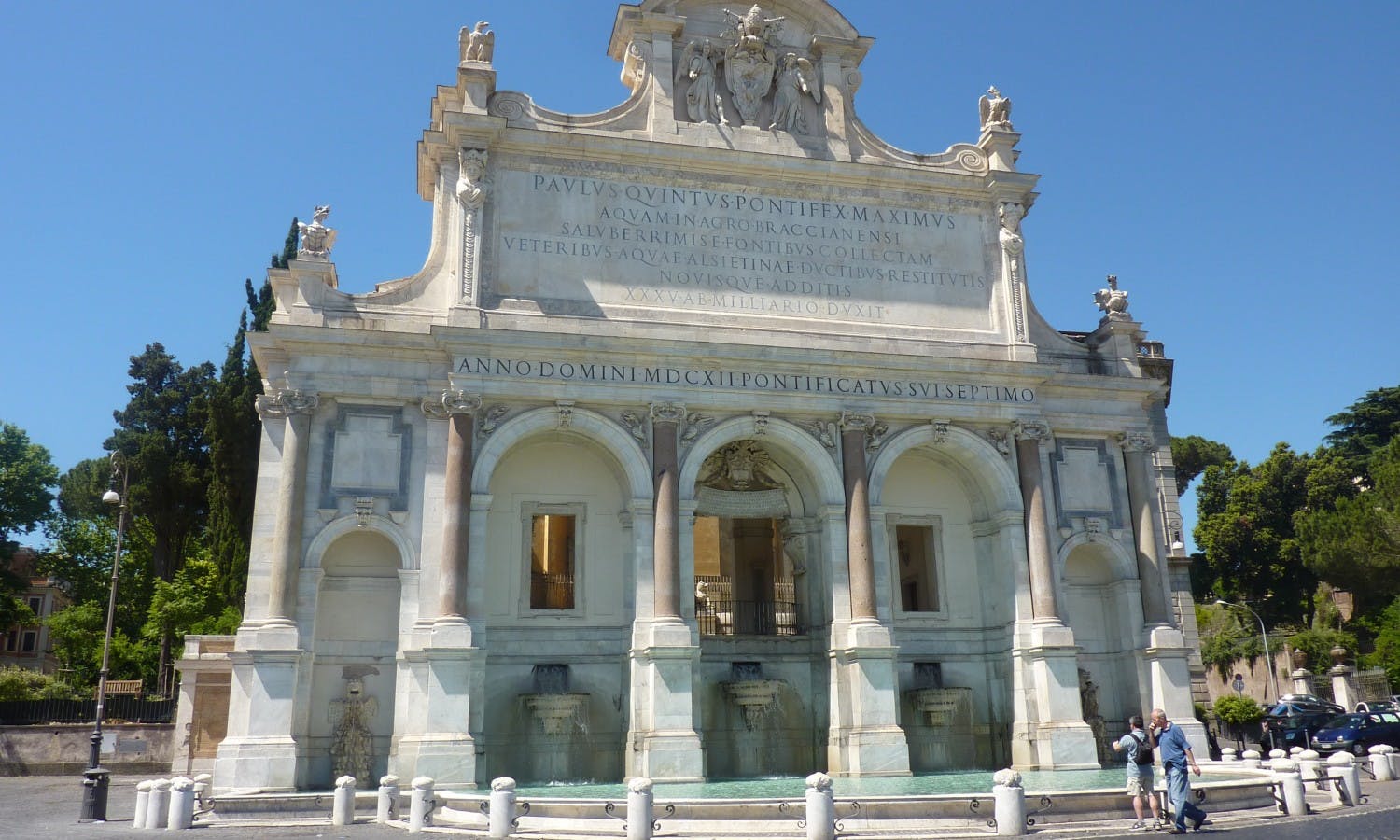
The Fountain of Acqua Paola on Janiculum hill, which stars in the opening scene of Paolo Sorrentino’s “The Great Beauty”
The Great Beauty
Winner of the 2014 Oscar for best foreign film, Paolo Sorrentino‘s The Great Beauty has sparked criticism and mixed reviews. Viewers loved it or hated it in no uncertain terms. Some have interpreted it as a nostalgic Felliniesque ode to the city of Rome; others as a cruel but faithful portrait of Roman society where vulgarity and brutality contrast with the city’s beauty, while others have seen nothing but a succession of clichés and quotes. One thing is certain: Italy’s capital is the undisputed star of the film. In fact, Sorrentino’s shots create several images that linger in the viewer’s mind long after the unforgettable closing credits sequence has finished. Among The Great Beauty‘s many interesting sites is Gianicolo Hill from the opening scene: the lingering shots of Fontana dell’Acqua Paola to the soundtrack of a female choir singing a sacred Yiddish song. Sacred time is abruptly interrupted by the following scene, the wild and profane party on the terrace overlooking the city. The Colosseum also plays a solid supporting role throughout.
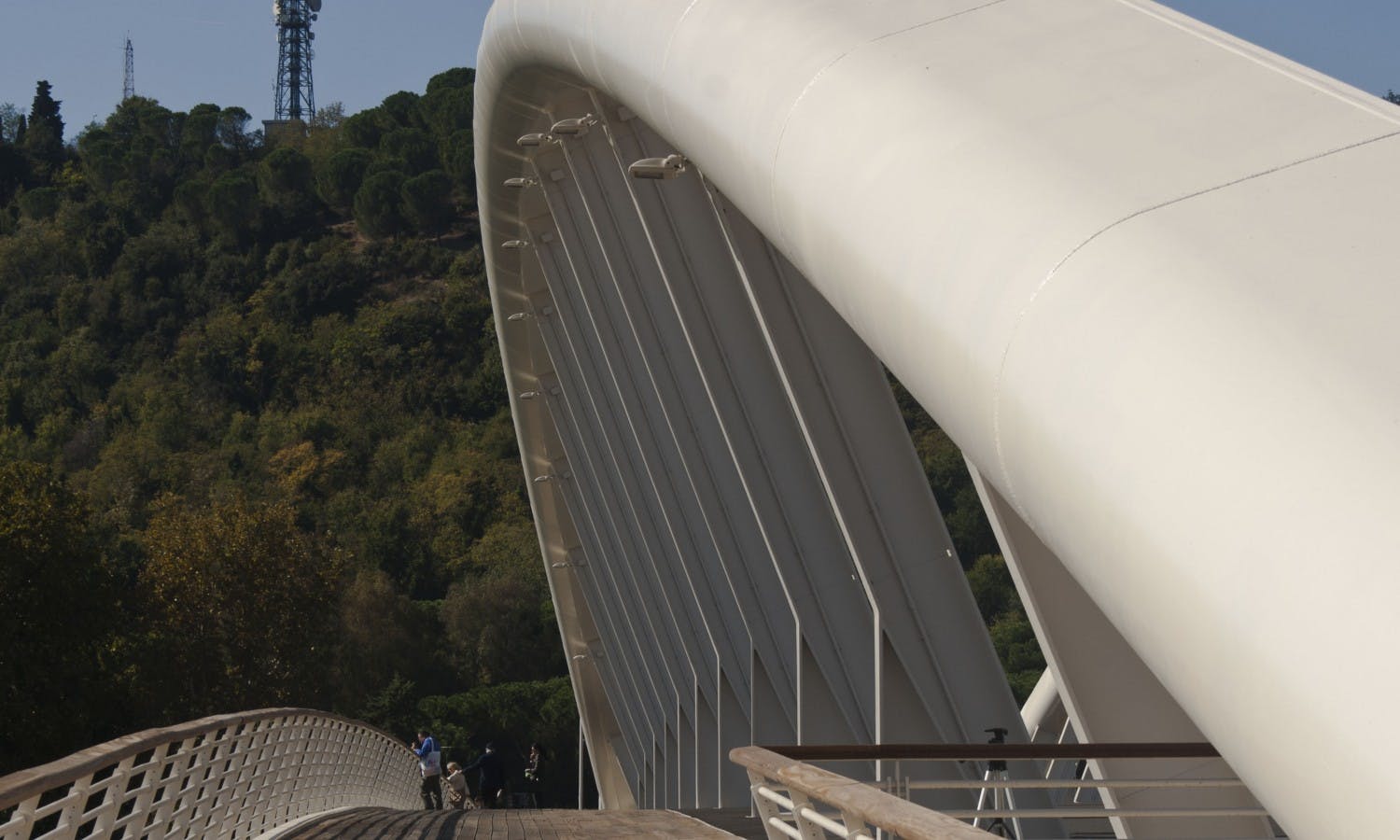
The Ponte della Musica, shown in the final scene of “They Call Me Jeeg Robot”
They Call Me Jeeg Robot
This film was the big revelation of 2016: the first film from first-time director Gabriele Mainetti, winner of seven David di Donatello and three Nastri d’Argento awards – all this for an Italian genre, manga-inspired film set in the outskirts of Rome, more specifically in Tor Bella Monaca. The main character, Enzo Ceccotti, is a man who lives off petty theft and other gimmicks, and one day he jumps into the Tiber river to escape his pursuers, not knowing that the river has been contaminated with radioactive waste. He, therefore, acquires superhuman powers which he, like any self-respecting superhero, intends to use to fight evil personified in the form of Zingaro, the leader of a gang of small-time crooks who want to make it big by entering the world of large-scale organized crime. Rather than highlighting the great monuments and picture-perfect postcard scenes, this film portrays the capital from its periphery: the Torvaianica fun fair, decaying mansions, Stadio Olimpico and Ponte della Musica. The final scene takes us back to the city center with a shot of Rome from a high vantage point: the Vittoriano monument shimmers in the evening light while Enzo watches the city from the top of the Colosseum.
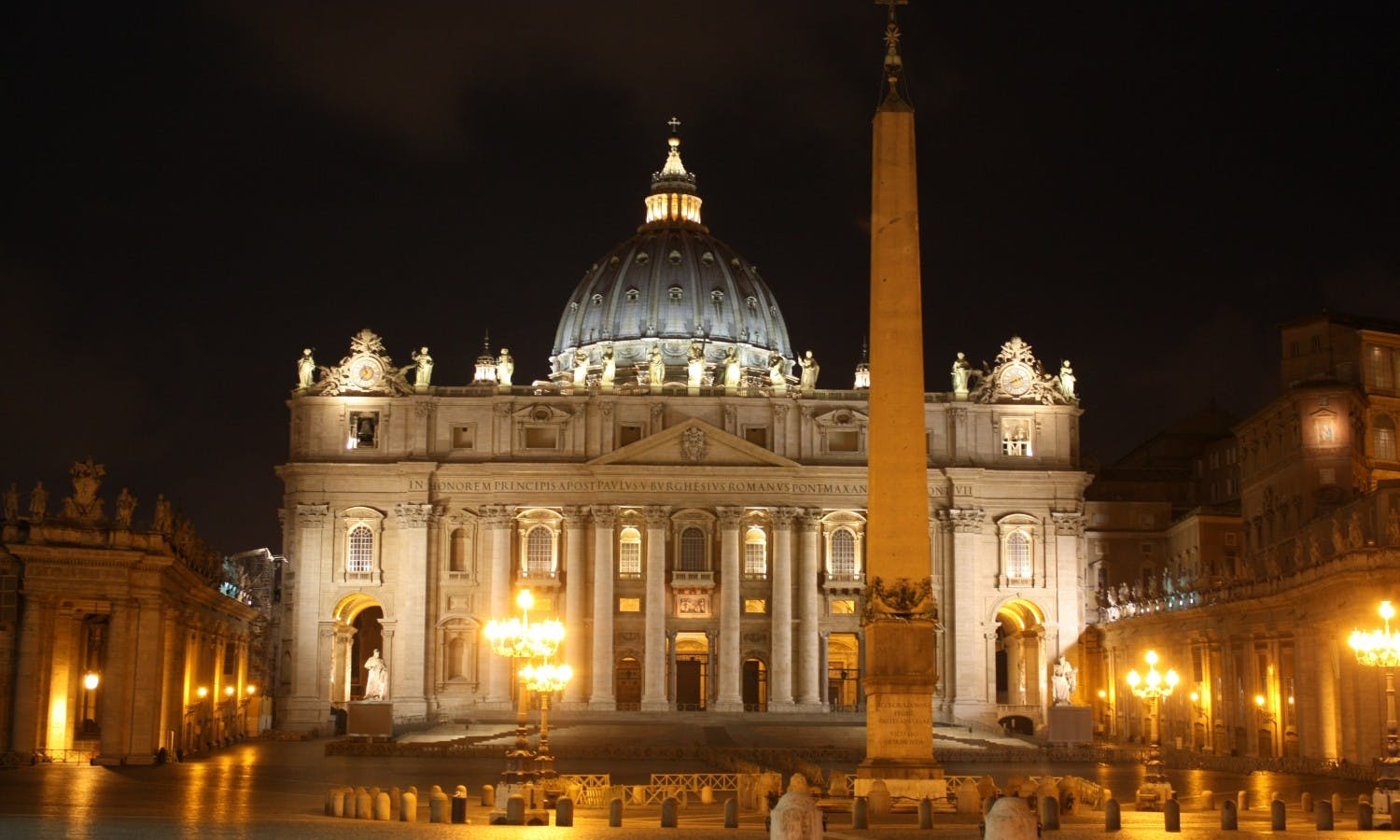
James Bond, during a car chase in “Spectre”, breezes past St. Peter’s Basilica
Spectre
Having completed all kinds of missions around the world, James Bond arrives in Rome with Spectre. This movie will keep you at the edge of your seat with a car chase scene that lasts almost ten minutes. 007 aka Daniel Craig tries to outrun a fearsome enemy agent driving his super-equipped car through the narrow streets of downtown Rome. These scenes portray the capital’s iconic locations in all their nocturnal splendor: the chase winds through Piazza Navona and Castel Sant’Angelo, to pass just in front of the St. Peter’s ‘cupolone’ and the Square’s colonnade, and ends, in classic 007-style, on the banks of the Tiber.
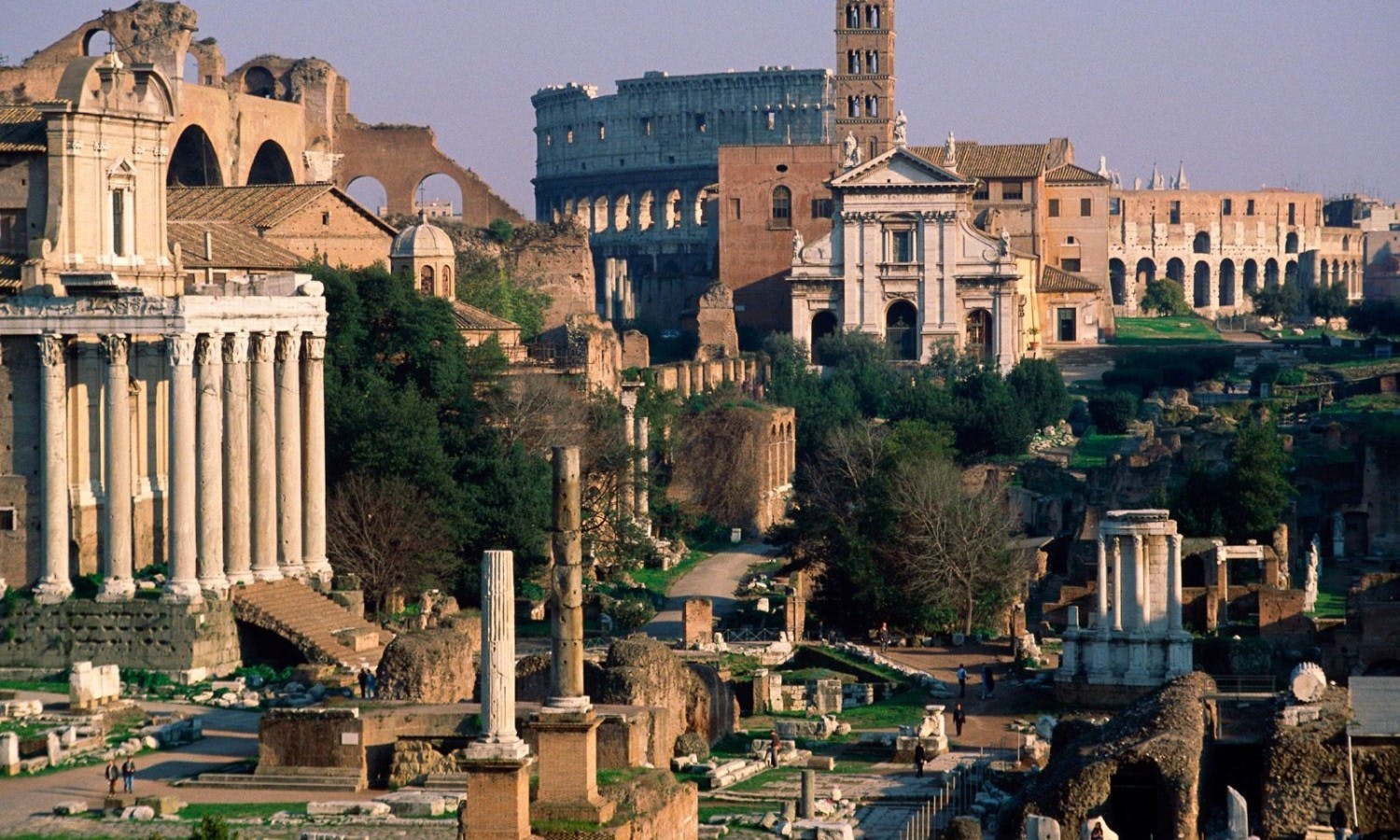
The Roman Forum
Habemus Papam
This 2011 Nanni Moretti movie tells the story of a recently elected pope who does not feel up to the task and decides to go to a shrink. For obvious reasons, We Have a Pope elicited much criticism until 2013 when Pope Benedict XVI announced his resignation from the Petrine ministry. Suddenly Moretti’s film seemed prophetic. The background of this film is, of course, the Vatican. As one would expect, many of the locations used for the Vatican scenes were reconstructed: the Muccioli Palace houses the Pope’s apartment while the unforgettable world volleyball tournament was actually shot in the courtyard of Palazzo Farnese. The outdoor scenes, however, were shot in real locations: for instance, the Pope prays incognito in the church of Santa Dorotea in Trastevere, while the scene where the runaway Pope meets the Vatican spokesman was shot in front of Foro di Augusto, which emerges in all its imperial beauty.
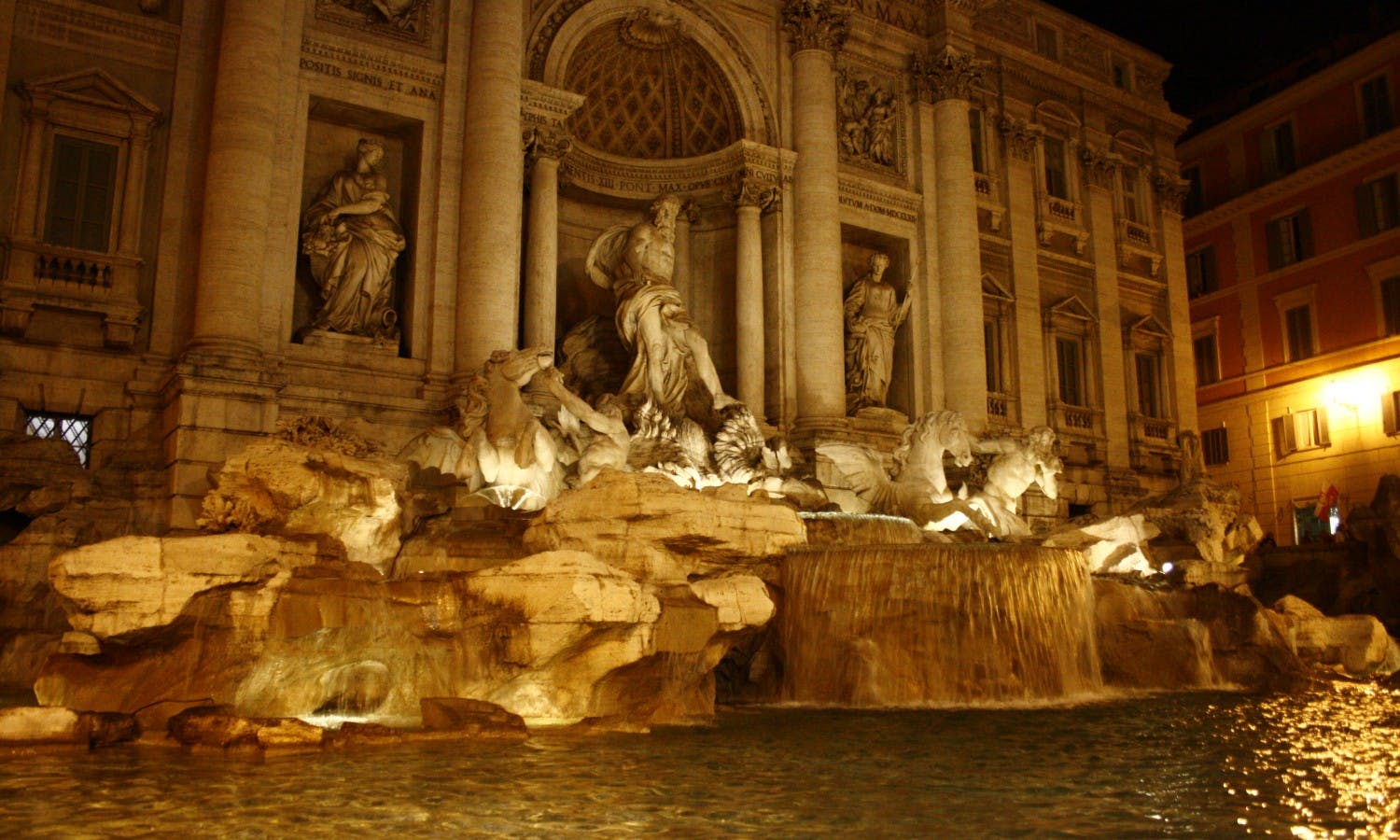
While looking at the Trevi Fountain, it’s impossible not to remember Anita Ekberg calling, “Marcello! Come here!”
La Dolce Vita
The mere mention of Rome immediately evokes the idea of la dolce vita (the sweet life), and anyone reflecting upon the golden age of Italian cinema will recall the iconic Trevi Fountain scene in Federico Fellini’s La Dolce Vita. A gorgeous Anita Ekberg frolics around the fountain and invites Marcello Mastroianni, who is watching her from afar, to join her in this magical, surreal shower. In short, the Trevi Fountain best represents the spirit and atmosphere of Italy and Italian cinema in that period. Moreover, the fountain itself showcases the heyday of Rococo, with its white marble statues and gold metal inserts. Even today, tourists sigh at the splendor of the Trevi Fountain, and dream of the sweet life.
